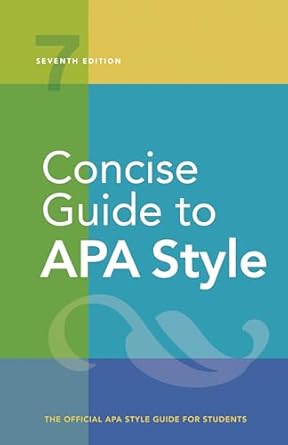[toc]
scholarly writing style tone and clarity tips
Concise Guide to APA Style: 7th Edition (OFFICIAL)
Page 62 Review
Mastering Scholarly Writing: A Critique of Style and Tone
This excerpt delves into the nuances of scholarly writing, emphasizing clarity, conciseness, and professionalism.
It highlights the importance of effective communication over stylistic flamboyance, a crucial distinction often overlooked by novice academic writers.
Sentence Structure and Clarity
The text rightly points out that complex, convoluted sentences hinder comprehension. “Overuse of long, involved sentences results in difficult, sometimes incomprehensible, language.” This is a fundamental principle often violated, especially when writers attempt to showcase erudition through unnecessarily intricate phrasing.
The passage continues by advocating for varied sentence length to maintain reader engagement, stating that “Varied sentence length helps readers maintain interest and comprehension.” A mix of short, punchy sentences and longer, more descriptive ones creates a rhythm that keeps the reader attentive.
Furthermore, the text astutely advises against packing multiple ideas into a single sentence: “Avoid including multiple ideas in a single sentence; instead, break the sentence into shorter ones.” This is excellent advice.
Each sentence should ideally focus on a single, manageable concept.
Breaking down complex thoughts into smaller, digestible units significantly improves readability. “Direct, declarative sentences with simple, common words are usually best.” This reinforces the idea that clarity trumps complexity in scholarly writing.
Paragraph Length and Conceptual Flow
The discussion on paragraph length is equally insightful. “Single-sentence paragraphs are abrupt and should be used infrequently.” While brevity can be powerful, isolated single-sentence paragraphs can feel disjointed and lacking in context.
Conversely, “Paragraphs that are too long (i.e., longer than one double-spaced manuscript page) risk losing readers’ attention.” Maintaining reader focus requires strategically breaking up long stretches of text.
A new paragraph should signal a shift in thought or a new aspect of the argument.
“A new paragraph signals a shift to a new idea and provides a pause for readers—a chance to assimilate one step in the conceptual development before beginning another.” This highlights the crucial role of paragraph breaks in guiding the reader through the writer’s thought process. “Look for a logical place (or places) to break up a long paragraph or reorganize the material.” This is practical advice for refining a manuscript and ensuring a smooth, logical flow of ideas.
Tone and Professionalism in Scholarly Discourse
The text effectively differentiates between scholarly and creative writing. “Although scholarly writing differs in form and content from creative or literary writing, it does not need to lack style or be dull.” While creative writing prioritizes expression and artistic flair, scholarly writing prioritizes clear and objective communication.
The excerpt warns against using creative writing techniques that can obscure meaning in academic contexts. “Devices that are often used in creative writing—for example, setting up ambiguity; inserting the unexpected; omitting the expected; and suddenly shifting the topic, tense, or person—do not support the objective of clear communication in scholarly writing.” These techniques, while effective in fiction, can be detrimental to the precision and clarity required in scholarly prose.
The passage emphasizes the importance of a direct and straightforward presentation of research findings. “When describing your research, present the ideas and findings in a direct and straightforward manner, while also aiming for an interesting and compelling style…” Striking a balance between clarity and engagement is key.
The text suggests achieving this through elaboration, careful word choice, and varying sentence and paragraph lengths, as discussed earlier.
Furthermore, it underscores the importance of maintaining a professional and formal tone. “Use language that conveys professionalism and formality.”
The excerpt provides a concrete example of maintaining professionalism in academic discourse: “For example, scholarly writing often contrasts the positions of different researchers, and these differences should be presented in a professional, noncombative manner: Stating “Gerard (2019) did not address’ is acceptable, whereas “Gerard (2019) completely overlooked” is not.” This illustrates the importance of respectful disagreement and avoiding accusatory language.
The text wisely suggests imagining a specific reader to guide the writing process: “One way to achieve the right tone is to imagine a specific reader you intend to reach and write in a way that will inform and persuade that individual.” This is a valuable technique for tailoring the tone and style to suit the intended audience.
Buy full ebook for only $18: https://www.lulu.com/shop/american-psychological-association/concise-guide-to-apa-style-7th-edition-official/ebook/product-rmzpq54.html?page=1&pageSize=4
Scholarly Writing Style Tone And Clarity Tips
Read more: APA In-Text Citations: A Guide

